
..........................................................................................................................................................................................................
"if you think the spring classics are hard, try scotland"

the mighty dave t and i were reminiscing only the other day about the dearth of cycle jerseys available, firstly when he were a lad and, slightly more recently, when i were one too. the adverts at the back of the comic in the eighties and nineties were filled with all the goods we now shop for online. many of the businesses that filled those pages are now no more, mostly killed off by the rise of t' internet and probably a concomitant rise in business rates.
one of those retailers was mel bentley of leeds; i have no idea whatever happened to mr bentley, for we lost touch several decades ago, but his cycling weekly advert often featured replica team jerseys for sale, frequently produced by companies other than those that supplied the actual teams, and often manufactured from a strain of polyester that had much in common with tissue paper, including its thickness. the pride demonstrated when riding in a newly acquired team jersey was usually seriously undermined after only a couple of washes, when it more closely resembled a used cement bag.
though there was always a soupcon of quality gear available from the usual suspects, in general, cycling apparel has moved on considerably since those days. no longer are we constrained to choosing from the colours of the giro d'italia peloton; it's now entirely possible to sit comfortably in a coffee shop without looking like a refugee from a bahrain merida training camp. and assuming you keep the slurping to a minimum, there's the possibility nobody would even know you were there.
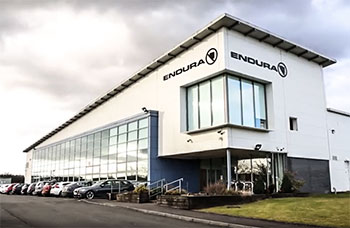
at the risk of demeaning my country of origin, it was something of a surprise to discover that the more salubrious end of the cycle clothing market was more than adequately provided for by a scottish company based on the outskirts of livingston, near edinburgh. i am, of course, referring to endura, currently the official clothing supplier to spain's movistar world tour team, as well as that of the recently formed movistar women's team. 2018 sees endura's 25th year of trading, so it seemed a reasonable idea to have a few words with founder, jim mcfarlane, a quarter of a century after he cut his first piece of lycra on the kitchen table in edinburgh and decided to see if he could make a go of creating a cycling apparel brand.
what are the main changes he's observed over the intervening quarter century?
"There have been waves of change. We have seen the mountain bike emerge in the early nineties and then develop into more and more sophisticated technology with carbon, full suspension, disc brakes, dropper seat posts etc.
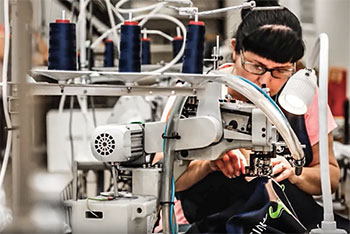 "For road, we have seen the rise of the MAMIL in the UK as road cycling evolved into a more mainstream sport in the late nineties and noughties, in part driven by Team GB's success in cycling, in successive Olympics, that made riders like Chis Hoy and Bradley Wiggins international household names, in a way that had never happened in British cycling previously. This peaked in 2012 with the London Olympics and Bradley Wiggins winning the Tour de France.
"For road, we have seen the rise of the MAMIL in the UK as road cycling evolved into a more mainstream sport in the late nineties and noughties, in part driven by Team GB's success in cycling, in successive Olympics, that made riders like Chis Hoy and Bradley Wiggins international household names, in a way that had never happened in British cycling previously. This peaked in 2012 with the London Olympics and Bradley Wiggins winning the Tour de France.
"In the US we saw the dramatic rise of road cycling popularity with every Tour de France win that Lance Armstrong made from 1999 to 2005 and have seen it decline again over several years after his fall from grace.
"And through all of this, we have seen the dramatic rise in cycle commuting in urban landscapes across Europe, partly due to improved infrastructure and an increasing sense (which is perhaps misguided) of safety in numbers, when mixing with other traffic.
"All of these things have had an impact in the cycle industry and while the UK has been at best patchy for the past four or five years, and the US has been positively distressed, most European markets have continued to grow steadily. More recently, the introduction of the E-Bike is having a profound and positive effect on markets where it has gained traction. The other really positive story in the past few years, has been the rise of women's sport cycling, nowhere more so than in the UK."
it's perhaps poignant that jim began with a look at the world of offroad, the bikes for which i have often disparagingly referred to as 'sprung, farm gates', the sort of comment that could only come from one mired in the ways of skinny tyres. but like many cyclists of my generation, it was the rise and rise of the mountain bike that made it a practical and desirable reality to become involved in the first place. the image of road cycling in the eighties compared disfavourably with the image of this new flavour of cycling originating in the workshops of joe breeze, tom ritchey and gary fisher.
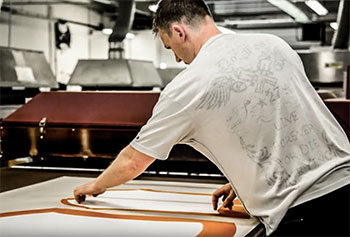
endura was once renowned for producing mtb kit, a situation that arguably shifted in favour of road cycling in the early 2000s. recently, the company's mtb range seems to be making a comeback. is this as a result of external trends, or are endura astute enough to subtley create their own trends?
"I wish we were that smart. Endura's greatest strength and weakness is arguably that it isn't just one thing. We are heavily involved and innovative in MTB and we're just the same in road. And commuting. And triathlon. It's possibly easier to have simpler marketing when all you do is one thing like Castelli, or Assos, or Rapha in road cycling, or with Fox or Troy Lee in MTB.
"But ultimately, it's all cycling and people who work at Endura generally ride road and mountain. So while it's perhaps tougher for us to be recognised as specialists in road cycling when it's clear we also do other disciplines, the truth is that we put in just as much effort in each discipline (or 'tribe') as our more narrowly focussed competitors, because we invest so heavily in product development and R&D.
"The positive is, that, having that breadth of exposure means that we are less vulnerable position when the market swings from road to MTB or vice versa and that's something that is inevitable, even after several years. People get bored with what they have been doing and want something fresh and new, or as new technologies make a different discipline more appealing."
i recall my early reviews of endura kit, shortly after the turn of this century and if i'm brutally honest, it was good, but not what you'd call outstanding. however that may conceivably have been the transition period between mtb and road. with the release of the more innovative equipe range, developed in conjunction with their own sponsored domestic road team, there was a dramatic improvement in quality, giving credence to the theory that professional cyclists are a demanding lot. does jim miss no longer having his own road team and does he harbour any aspirations to revisit the project in the future?
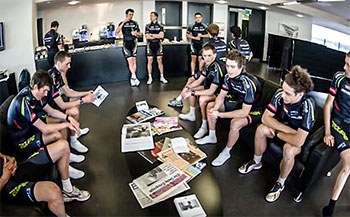
"I have absolutely no regrets about having had our own road team. It was an adventure and it was renegade and authentic for us to do it ourselves, because making things up as we go along is part of what I love about Endura. It was fun and it was exciting.
"Would I do it again? I don't think so.
"Partly that's simply because we did it for several years, so we know how it works from the inside out and in order to want to do it again we would have to think that we were going to learn something new. I'm not sure that that would be the case; at least not in the next few years.
"Also, it is hugely time consuming and horribly expensive. If you think that almost all teams are owned by companies who do nothing else but run a team and find sponsors to pay for it, then remember that we are trying to be the best cycle apparel and helmet company in the world, you have to realise that running a team is a massive distraction to the job at hand. I think where we currently are, as a clothing sponsor to men's and women's WorldTour teams, is a more natural place for us to gain all the relevant learning. From this level of racing in road and in downhill racing and Enduro with the Athertons and Trek Enduro teams, it keeps us absolutely focussed on the product and how it needs to perform at the pointy end of elite racing. It's then for us to see what we can learn from that and bring it to our principal clothing ranges.
though allegedly nothing succeeds like success, there's no denying that success at world tour level doesn't happen overnight. it may even be possible to alter that maxim just a smidgeon to reflect that, just possibly, 'nothing succeeds like experience.' after 25 years in the business and firmly ensconced at what jim described above as "the pointy end of elite racing.", can he offer any personal insight as to how he sees cycle clothing developing in the future?
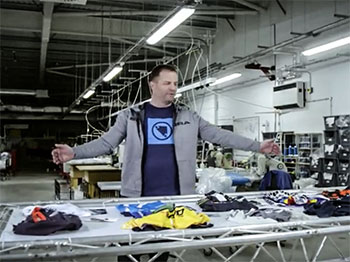
"Well, it will of course keep on developing and becoming more sophisticated. I think materials technology advances will continue to be the biggest driver. That can be through environmentally reactive yarns, leading to 'intelligent' fabrics that, for example, allow air to pass through the fabric when you are warm and shut it off when you get cold. It may also allow luminescence within the yarns, but without doubt, it will all have to become more environmentally friendly.
"Wearable technology has been talked about a lot lately and has been for many years; there is no question that this is coming, however I think we are still ten years or so away from seeing the breakthrough in integration between technology and materials, allowing the practical, affordable and durable coupling of sensors with cycle apparel for everyday use.
"From a manufacturing perspective, robots are going to start making clothes in a significant way in the next decade and that will help with accuracy and costs in the longer term."
as i mentioned in my opening paragraphs, once less well-versed in the mores of cycling apparel, it was something of a surprise to learn not only of endura's scottish heritage, but also its physical location on the east coast. i had presupposed an italian and swiss domination of the market; britain itself did not feature highly on the horizon. that a country with less than ten percent of the uk population had not only provided a tdf king of the mountains, but harboured a cycling apparel provider rivalling the very best, gave further cause for national pride.
however, the fact that endura are the sole flag bearers in this respect, does make me wonder about the commercial benefits of starting commercial life in scotland. does jim feel that being based north of the border since day one, has provided endura with a commercial advantage over their competitors, either in marketing or technical development terms?
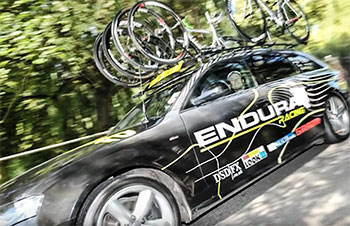
"Yes and no. In practice, we don't need to be in Scotland to develop wet weather gear or MTB clothing. However I have always been surprised about just how simple the messages has to be, in order to resonate with people in general. So it was an advantage when we first launched with MTB and foul weather clothing, because people immediately said "you guys are from Scotland, so you know about really bad weather. And you have mountains, so your MTB kit must be dialled in".
"The further we were from Scotland then the more that mattered.
When you then go on to sell high-end, lightweight, hot weather road gear, then that's when it works against us and the Italians have the advantage. We can develop that product just as well as any Italian company, but the story is so much harder to make stick. So really it's about perception rather than reality. But I can't knock, it as it helped us in the early days with MTB kit when it was critically important to have something to get us established. The 'pigeon-holing' of the brand is something that we're slowly making progress with and obviously the fact that we sell most of our products outside the UK, has helped. As, indeed, has our associations with Cervelo Bigla and Team Movistar.
"Ultimately, however, we are forward-looking as a brand; we focus on progress and the technological advancements in cycling. Though we have now been around for quarter of a century, we'd never try to compete on heritage, always assuming Scotland had the same perceived historical association with cycling as does Italy."
if i might, for a brief moment, digress in the direction of the drumming world, there are no drum companies of which i am aware, who also offer a line of cymbals. many feature their own hardware ranges, but none have diversified into sonorous metal discs. nor, indeed, do any manufacture their own drumheads. cycle clothing companies, however, seem to exhibit greater leeway in the constitution of their ranges.
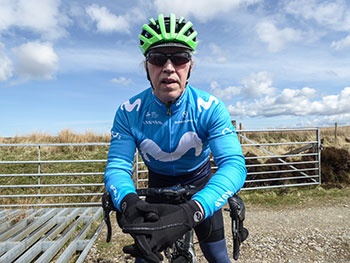
pretty much all, including endura began with shorts, jerseys, jackets, socks etc., but over time, footwear and helmets inevitably find page-room in the catalogues. jim almost began endura as a cycle helmet business, rather than clothing, so after twenty-five years, has he any plans to develop the non-apparel image of endura?
"Absolutely. 2018 is the first year we have been serious as a helmet company. We now have a much broader range that includes high-end Koroyd road and MTB pieces as well as the patented Aeroswitch helmet, with detachable rear tail that hits the shops next month. We believe this to be the fastest aero helmet in the world.
"It's nice to be involved in hardware products because there is more control over the final shape and form of the product than with apparel, but our roots remain in the latter and I am sure that clothing will remain the major part of our business for a long time to come."
though i'd prefer not to be accused of over-egging the pudding when it comes to repetitive mentions of jim's 25 years in the business, when he was cutting that first piece of lycra on his kitchen table, at around the same time that another famous scotsman was doing likewise with washing machine parts, he had (metaphorically speaking) a lot of room to manoeuvre. cycle shops of the day were less chokka-blok with racks of jerseys, jackets, tights; in a nutshell, consumer choice was a tad more restricted.
since such halcyon days, however, there has been a veritable splurge of those intent on entering the market with 'unique' cycle clothing, born from an inability to 'find just the style of clothing' that eluded their credit cards. if that is still the case, they must be near impossible to please, personally, i think the market must be close to saturation point, but does jim think there's room for more at the coffee shop?
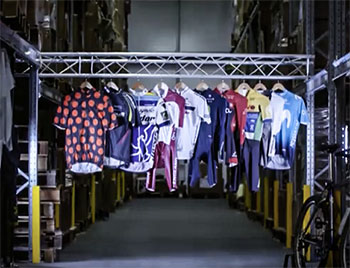
"Honestly, I think that it's beyond saturation and now into distress in many markets, including the UK. For road that is partly to do with micro brand start-ups, trying to be Rapha 'me too' brands on the back of the perceived boom in cycling, coupled with the fact that it seems cool to be working in cycling at the moment.
"The other factor is that sublimation printing has become digital; so it is quite easy to design graphic jerseys and bibshorts and have 50 or 100 pieces made. Twenty years ago it just wasn't economic to produce detailed graphics using screen printing. So it's now quite easy to set up a website, produce a dozen or so different print designs and pitch yourself as the cool new thing, selling direct to consumers. In practice not many people are managing to really build businesses. Beyond the print design, the product usually isn't that special; that takes time and costs money to do. But there are so many of these micro brands that provide a living at least for the people working in them, that they are quite significant in aggregate. I think we'll see a significant number of them disappear over the next decade, but undoubtedly some will go on to grow and professionalise. They will be our competition in the future."
with world economics arguably less stable than was the case in 1993, coupled with an apparently endless desire or need to geographically change the face of design and manufacture of pretty much everything, surviving and prospering in the niche and fickle market of cycling is no mean feat. for those of you have met jim mcfarlane, well will you know that he is the antithesis of the corporate high-flier (and i mean that as a compliment). the atmosphere at endura's livingston headquarters is amongst the most relaxed i've found anywhere, something that almost certainly comes from the top.
this points to a man at ease with his own philosophy, so how would he describe that?
"Stay true to what cycling is all about, don't get distracted by other people (and brands) who try to tell you that it's now something else, and never lose the confidence to try something new that just might make peoples rides faster, funner or more rewarding. It's what we refer to as 'Renegade Progress' at Endura."
tuesday 8 may 2018
 ..........................................................................................................................................................................................................
..........................................................................................................................................................................................................